The best way to recover your muscles after a workout is to use science-based nutrition, movement, and sleep—starting within 60 minutes of finishing your exercise.
Research shows that how you recover after each workout is just as important as the workout itself for muscle growth, strength, and staying injury-free.
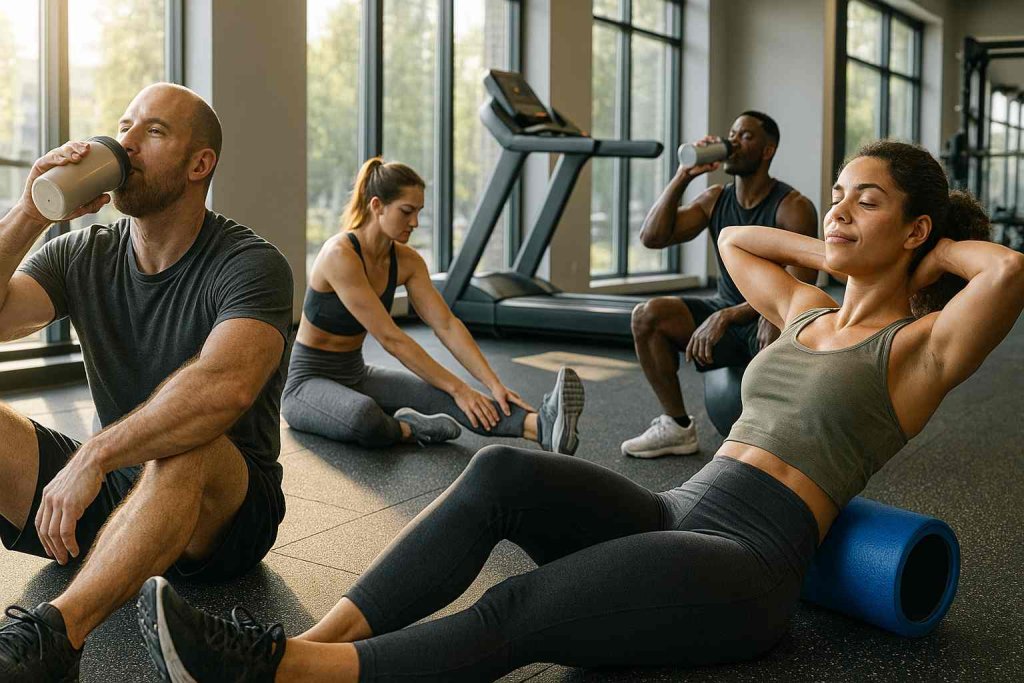
In this comprehensive guide, you’ll learn the 15 best post-workout muscle recovery tips, why they work, and how to apply them to your training—supported by the latest research and elite trainers.
What Is Post-Workout Recovery? Why Does It Matter?
Post-workout recovery refers to everything you do after exercise to help your body repair, adapt, and get stronger.
When you exercise—especially with resistance training or intense cardio—you create microscopic tears in your muscle fibers, deplete your glycogen (muscle fuel), and cause minor inflammation.
How you recover determines how fast and well those muscles rebuild. Proper recovery leads to:
- Faster muscle growth (hypertrophy)
- Less muscle soreness (DOMS)
- Reduced risk of overtraining, burnout, or injury
- Improved performance in future workouts
Ignoring recovery leads to stalled progress, fatigue, more frequent injuries, and a higher risk of quitting altogether.
15 Science-Backed Tips for Muscle Recovery
1. Refuel With Protein & Carbs in the Anabolic Window
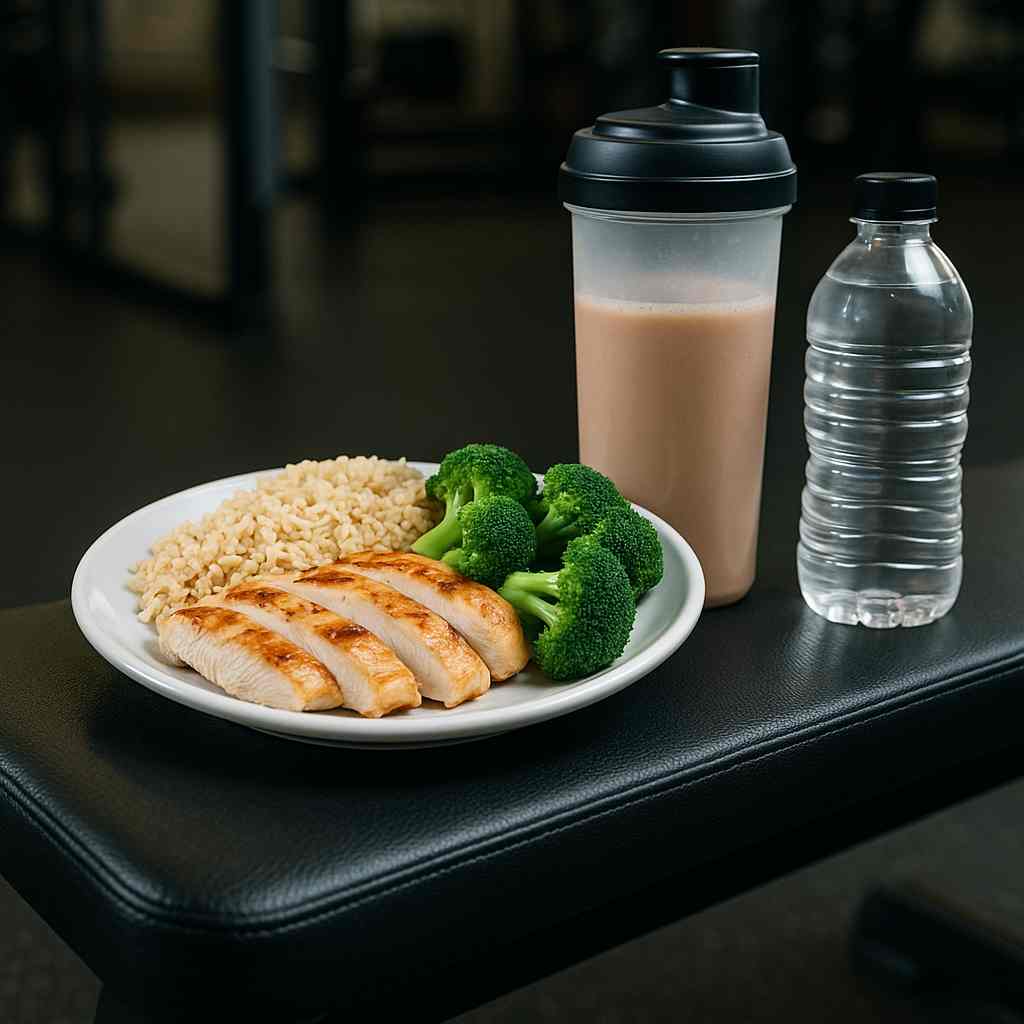
Why: Right after a workout, your muscles are primed to absorb nutrients and start the repair process. This is called the anabolic window—the first 30–60 minutes post-workout.
What to do:
- Eat a meal or shake with 20–40g of high-quality protein (whey, casein, soy, eggs) and 40–60g of carbohydrates (rice, oats, fruit, potatoes) within 30–60 minutes.
- Protein supplies amino acids to rebuild muscle. Carbs refill your depleted glycogen, fueling recovery.
Evidence: Multiple studies show better muscle protein synthesis and reduced soreness when refueling promptly (GSSI, 2025).
2. Hit Your Daily Protein Target
Why: Daily protein intake is the biggest dietary factor in muscle repair and growth.
What to do:
- Consume 1.6–2.2 grams of protein per kilogram bodyweight every day.
Example: 75kg person = 120–165g protein per day - Spread protein across 4–5 meals for optimal muscle protein synthesis.
Best sources: Chicken, fish, eggs, low-fat dairy, tofu, tempeh, protein powders.
Evidence: Supported by American College of Sports Medicine, International Society of Sports Nutrition, and dozens of 2024–2025 meta-analyses (NIH, 2024).
3. Use Anti-Inflammatory Foods & Supplements
Why: Exercise causes a temporary spike in inflammation—helpful for adaptation, but too much slows recovery.
What to do:
- Eat more omega-3 rich foods: salmon, sardines, walnuts, chia, flaxseed, fish oil.
- Add polyphenol-rich foods: tart cherry juice, turmeric, blueberries, blackberries, green tea.
Supplements: Fish oil (1–2g EPA/DHA), curcumin, and tart cherry extract can reduce muscle soreness and support healing (Riverside Sports Therapy, 2025).
4. Hydrate and Replenish Electrolytes
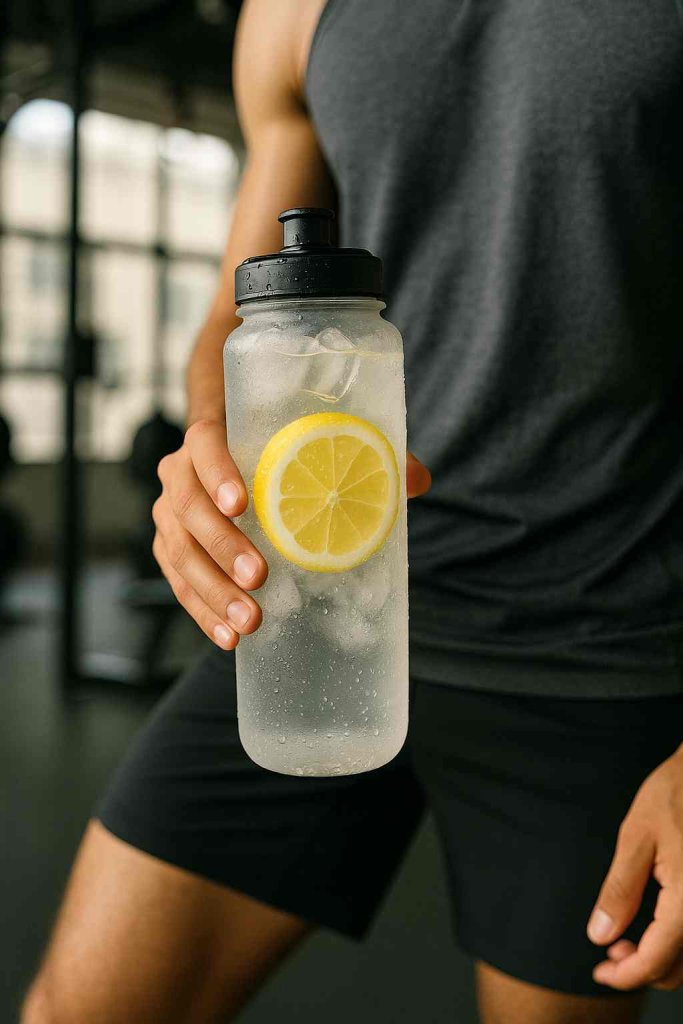
Why: Dehydration impairs muscle recovery, raises injury risk, and prolongs soreness.
What to do:
- Drink water before, during, and after your workout.
- After heavy sweating, replenish electrolytes (sodium, potassium, magnesium) with coconut water, sports drinks, bananas, leafy greens, or salty snacks.
How much? General target is 3–4 liters per day for active adults, more if sweating heavily (ACSM, 2025).
5. Active Recovery: The Power of Gentle Movement
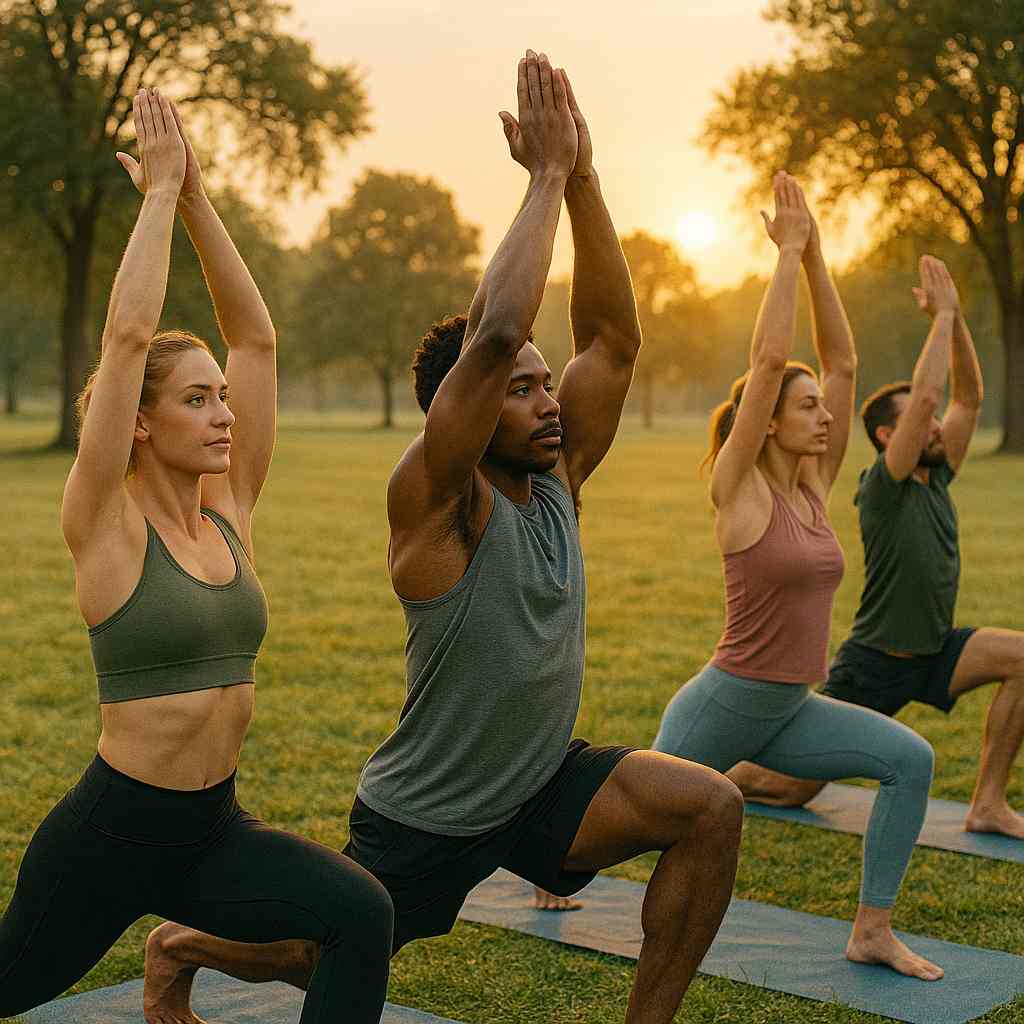
Why: Light movement after hard training improves blood flow, flushes waste, and shortens recovery time.
What to do:
- Do 10–30 minutes of gentle exercise: brisk walking, cycling, yoga, swimming, or mobility drills.
- On off-days, keep moving—avoid total inactivity.
Benefits: Active recovery is proven to reduce DOMS and speed muscle healing (Peak Portland, 2025).
6. Foam Rolling & Static Stretching
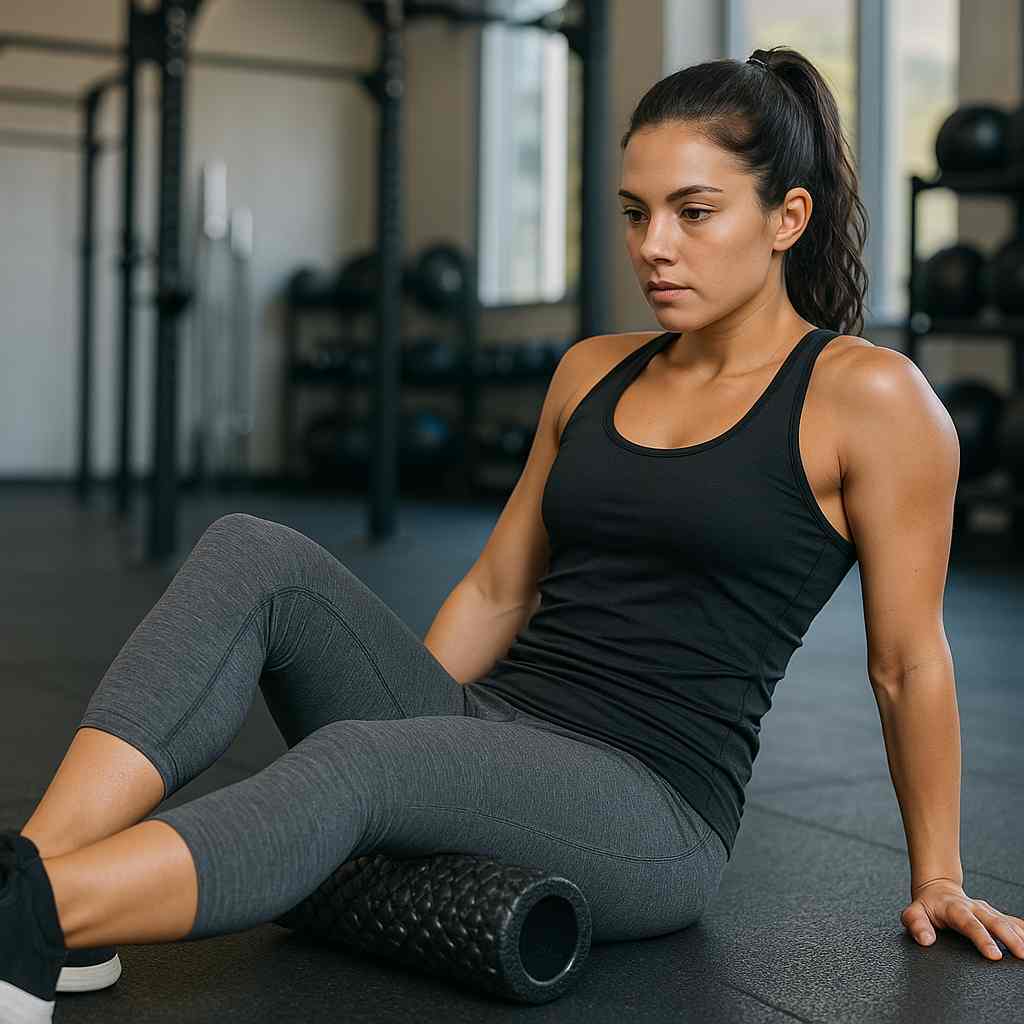
Why: Foam rolling and stretching help relieve tight muscles, improve mobility, and ease soreness.
What to do:
- Use a foam roller or massage ball for 5–10 minutes after exercise, focusing on sore spots.
- Follow up with static stretching (hold each stretch 15–30 seconds).
Best areas: Quads, glutes, hamstrings, calves, upper back, chest, lats.
Evidence: Studies show reduced muscle stiffness and improved flexibility.
A 2020 meta-analysis confirmed that foam rolling after exercise significantly increases joint range of motion and supports recovery (PubMed, 2020).
7. Cold, Heat & Contrast Therapy
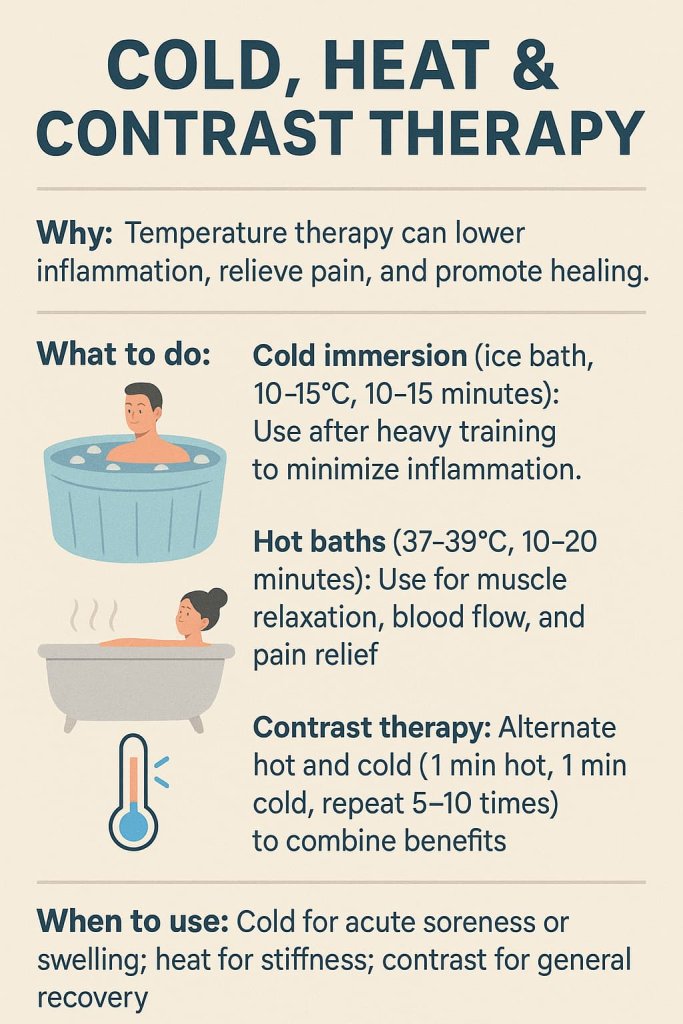
Why: Temperature therapy can lower inflammation, relieve pain, and promote healing.
What to do:
- Cold immersion (ice bath, 10–15°C, 10–15 minutes): Use after heavy training to minimize inflammation.
- Hot baths (37–39°C, 10–20 minutes): Use for muscle relaxation, blood flow, and pain relief.
- Contrast therapy: Alternate hot and cold (1 min hot, 1 min cold, repeat 5–10 times) to combine benefits.
When to use: Cold for acute soreness or swelling; heat for stiffness; contrast for general recovery (Sports Med Rockies, 2025).
8. Compression Garments for Faster Recovery
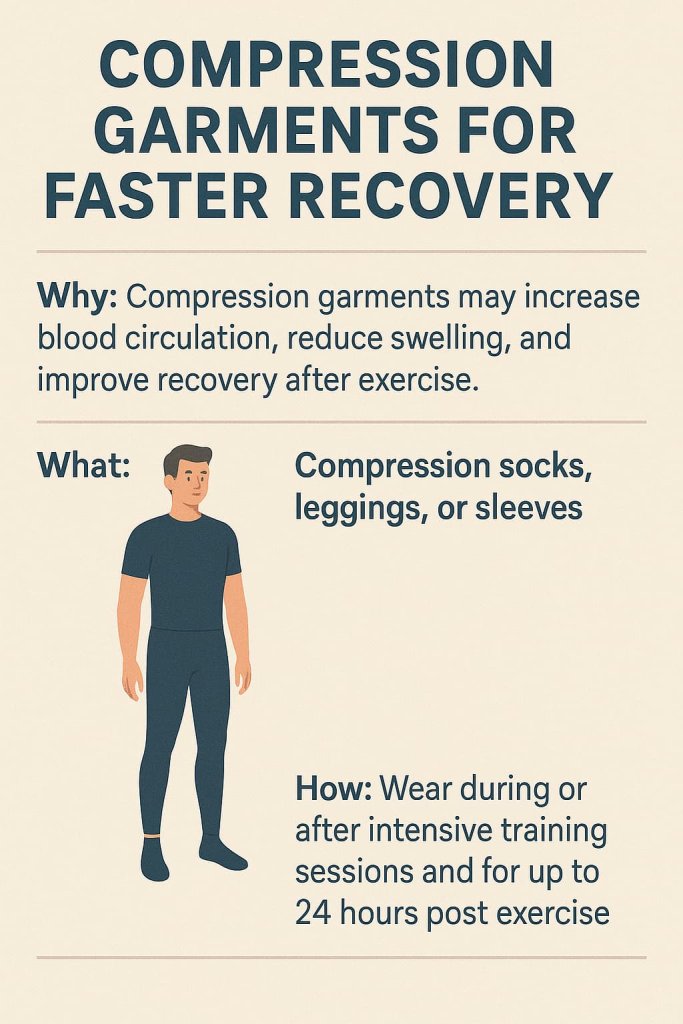
Why: Wearing compression clothing post-exercise enhances venous return, reduces swelling, and may speed recovery.
What to do: Wear for several hours after tough sessions or while traveling.
Evidence: Most benefit seen in endurance athletes, but also helps strength training recovery (Sports Med Rockies, 2025).
9. Massage & Self-Massage Tools
Why: Massage therapy reduces tension, improves circulation, and lowers markers of muscle damage.
What to do:
- Book a professional massage, or use massage guns, foam rollers, or lacrosse balls at home.
- Avoid aggressive deep tissue massage immediately after high-intensity workouts.
Evidence: A 2024 meta-analysis found that sports massage after workouts reduces muscle soreness and speeds healing (ResearchGate, 2024).
10. Optimize Your Sleep for Recovery
Why: Sleep is the foundation of muscle growth, hormone balance, and full-body repair.
What to do:
- Aim for 7–9 hours per night—deep, uninterrupted sleep.
- Keep your bedroom cool, dark, and quiet. Avoid screens for 1 hour before bed.
- Consider magnesium, glycine, or tart cherry for better sleep quality.
Evidence: Research shows that muscle protein synthesis, growth hormone release, and mental recovery happen mostly during slow-wave (deep) sleep at night, when the body restores and builds itself.
11. Take Full Rest Days & Rotate Muscle Groups
Why: Rest is when muscles actually rebuild and grow. Overtraining leads to fatigue and injury.
What to do:
- Take at least 1 full rest day per week.
- Don’t train the same muscle group on back-to-back days—allow 48+ hours between sessions for the same muscle.
Benefits: Resting keeps motivation high, progress steady, and overuse injuries away (Wikipedia – Overtraining).
12. Track Recovery With Wearable Tech
Why: Modern fitness trackers and wearables (Whoop, Garmin, Fitbit, Apple Watch) can monitor your recovery, readiness, sleep, and stress.
What to do:
- Track HRV (Heart Rate Variability), resting heart rate, and sleep patterns.
- Adjust your training volume and intensity based on your recovery scores.
Benefits: Helps avoid overtraining and personalize recovery strategies (Peak Portland, 2025).
13. Listen to Your Body & Avoid Overtraining
Why: Ignoring pain or warning signs can result in injury or chronic fatigue.
What to do:
- Differentiate between normal soreness and injury (sharp, stabbing, or joint pain).
- If you feel extremely fatigued, irritable, or unmotivated, take a rest or adjust your plan.
Evidence: Trainers and research agree: training through pain causes more harm than good (AP News, 2025).
14. Balance Nutrient Timing Beyond Protein
Why: Other nutrients also play a vital role in recovery.
What to do:
- Include healthy fats (olive oil, avocado, nuts) for inflammation control.
- Add complex carbs for glycogen replenishment.
- Ensure micronutrients (vitamins C, E, curcumin, magnesium, zinc) are present in your meals.
Example: A post-workout meal with salmon, sweet potato, spinach, and berries covers all recovery bases (Springer, 2025).
15. Harness Supercompensation for Gains
Why: Supercompensation is the phenomenon where, after you recover from a workout, your fitness temporarily surpasses your starting level—if you train again at the right time.
What to do:
- Plan your workouts so you hit muscles again during the supercompensation phase (typically 48–72 hours after a hard session).
- Don’t rush—insufficient recovery wastes the effect; too much time means you lose it.
Evidence: Top athletes and coaches use this concept to time training for the greatest gains (Wikipedia – Supercompensation).
Expert Recovery Timeline (Sample Schedule)
| Time After Workout | Recovery Actions |
|---|---|
| 0–60 min | Protein + carb shake/meal, hydrate, light stretching |
| 1–3 hours | More water, healthy snacks, gentle walking |
| Same day (evening) | Foam rolling, hot bath, light yoga |
| Bedtime | Prioritize sleep, magnesium if needed |
| Next day | Active recovery or full rest, monitor soreness |
| 48–72 hours later | Train muscle group again during supercompensation |
FAQs: Your Most Common Recovery Questions Answered
Q: Should I use supplements for recovery?
A: Not required, but protein powder, creatine, fish oil, and magnesium can help fill gaps. Whole foods should be your main source.
Q: What’s best for DOMS (Delayed Onset Muscle Soreness)?
A: Active recovery, foam rolling, tart cherry juice, and heat therapy can all help.
Q: How do I know if I’m overtraining?
A: Persistent fatigue, performance decline, sleep issues, and mood changes. Listen to your wearable or your own energy—take extra rest if needed.
Q: How long does muscle recovery take?
A: Most muscle soreness fades in 24–72 hours. Larger muscles and heavy lifting require more recovery than small muscles or light training.
Conclusion
Science shows that muscle recovery isn’t optional—it’s essential.
Whether your goal is muscle gain, strength, fat loss, or athletic performance, these 15 post-workout tips are your toolkit for maximizing every session and building a stronger, healthier body for life.
Start today:
- Eat a protein-rich meal after training.
- Stay hydrated.
- Prioritize sleep tonight.
- Apply 2–3 new tips each week until recovery becomes second nature.
